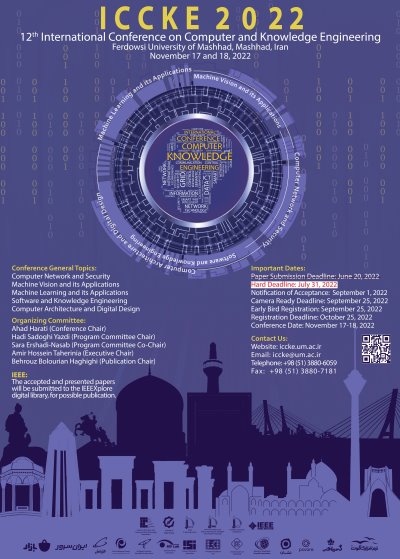0% Complete

Authors :
Keywords :
Abstract :
List of archived papers
Ali Salimi Sadr - Mahdi Shahbazi Khojasteh - Hamed Malek - Armin Salimi-Badr
Sanaz Tarhib - Jafar Tanha - Soodabeh Imanzadeh - Sahar Hassanzadeh Mostafaei
Farhad Abedinzadeh Torghabeh - Yeganeh Modaresnia - Seyyed Abed Hosseini
Alireza Azadbakht - Saeed Reza Kheradpisheh - Hadi Farahani
Amir Meydani - Ali Ramezani - Alireza Meidani
Phee Wei Qin - Ervin Gubin Moung - Ali Farzamnia - Farashazillah Yahya - John Julius Danker Khoo - Maisarah Mohd Sufian
Reza Latifi - Mahmoud Naghibzadeh
Amir Hossein Bakhtiari - Azadeh Mansouri
Farangis Sajadi moghadam - Saeid Rashidi



